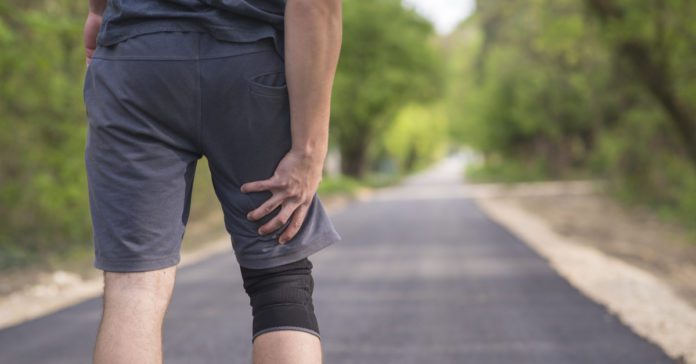The problem of the hamstring is often common in humans. It usually afflicts athletes such as track runners, skaters, and especially soccer and basketball players. Simply put, hamstrings work by extending the hip and flexing the knee. Before we can know the roles of hamstring, we should carefully see through our process of walking.

We expend about 60 percent of the time with our feet on the ground, while the remaining 40 percent is directed towards swinging the leg forward. But before delving right into the article, we need to define what a hamstring is prompt.
Hamstring Strain Injuries
A hamstring is a group of three muscles that run right along the back of your thigh. They are what give your leg and knee the ability to move and bend. Hence, whenever you have a hamstring strain, you have one or more of these muscles overloaded. The muscles may even begin to tear.
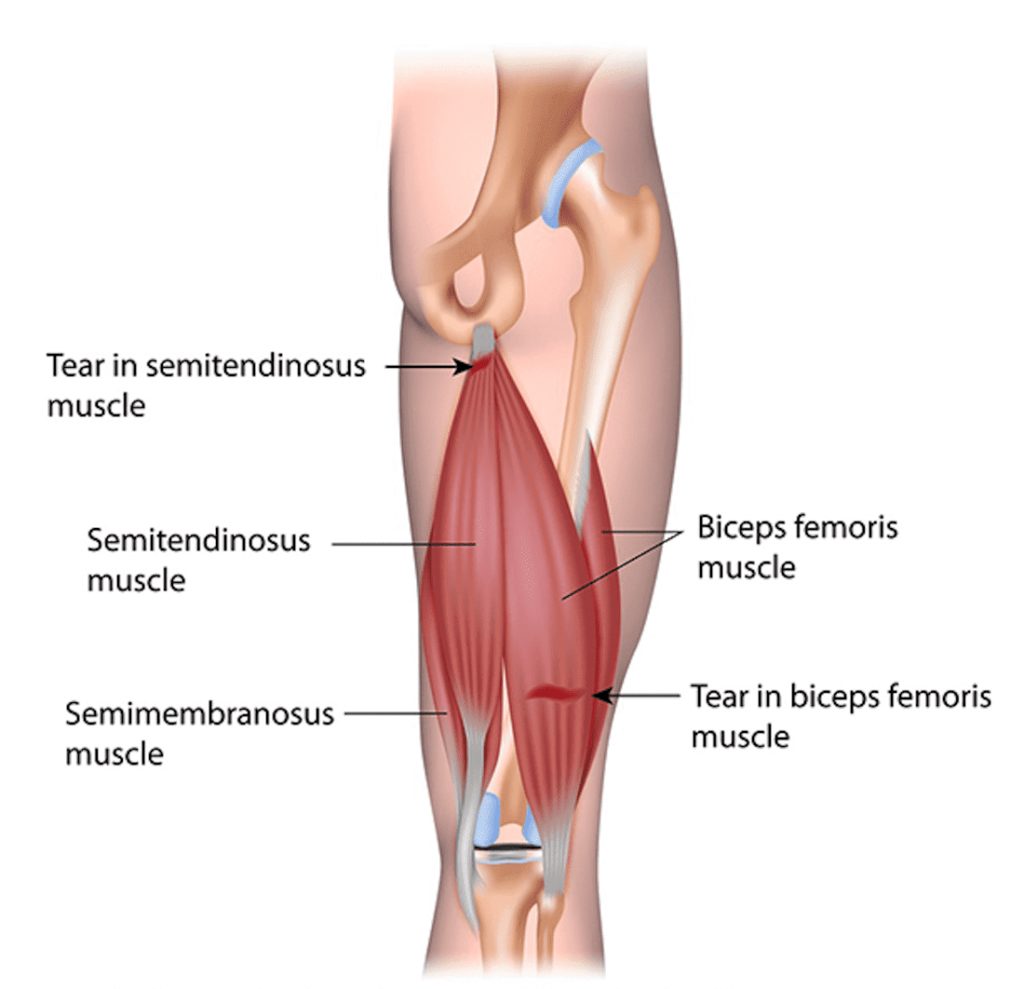
The reality is that you are more susceptible to a hamstring strain when you engage in activities that require a lot of running and jumping. It could also develop when you make quick and sudden starts and stops.
The three muscles that are affected includes:
- Semitendinosus
- Semimembranosus
- Biceps femoris
Common Causes of Hamstring Strain
A hamstring strain may quickly affect you if any of your muscles stretch just beyond their limits when you engage in any physical activity.
Below is a list of possible causes of hamstring strain:
Sports
When you participate in any sporting activity—especially as it relates to football, sprints, or basketball—you are most prone to a hamstring strain. You can equally have hamstring strain when you participate in dancing that requires extreme stretches too.
Previous hamstring injury
You are more prone to getting another if you have a history of a prior hamstring occurrence. This is even more likely when you resume your activity just before healing your muscles, which haven’t rebuilt enough strength.
Poor flexibility
If you are the type that doesn’t have good flexibility, anytime you engage in a particular physical activity, your muscles might not be able to bear the firmness required by such an activity.
Muscle imbalances
Even though some experts disagree, but there are suggestions from other experts that a muscle imbalance may lead to a hamstring strain. This is because when your quadriceps, i.e., muscle along your front thighs, gets stronger and broader far more than your hamstring muscles, you could be prone to injuring your hamstring anytime soon.
Other common causes of hamstring strain include:
- Old age
- Prior knee injury
- Prior calf injury
- Osteitis pubis
- Tight hip flexors
- Fatigue.
Hamstring Strain Symptoms
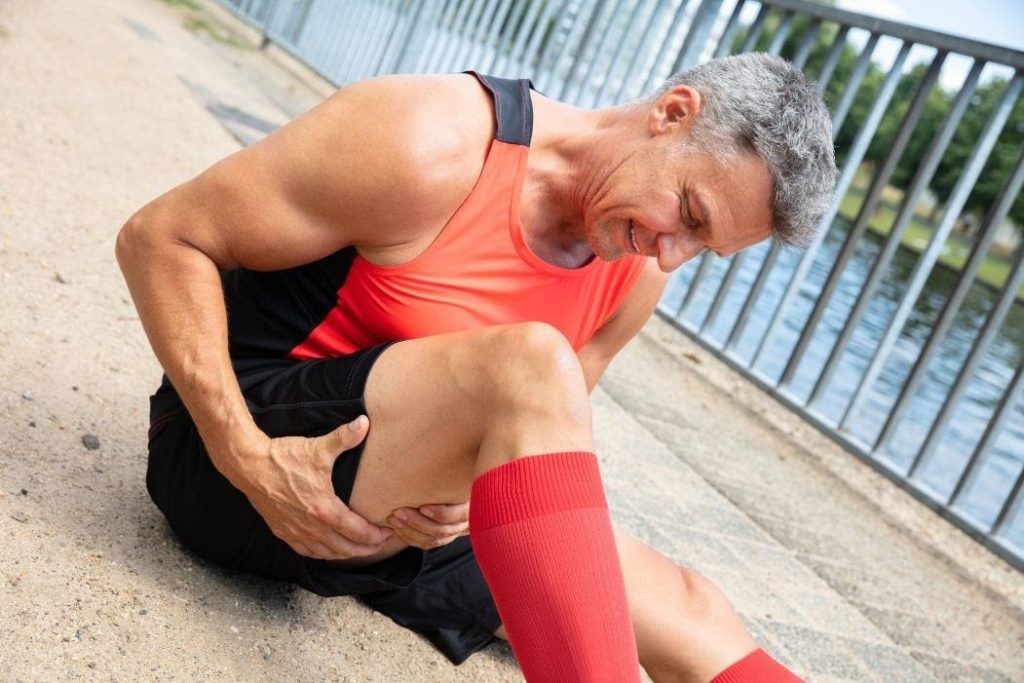
When you have hamstring strain, the symptoms you see may vary. Most times, mild hamstring strains do not hurt that much. However, severe ones may bring a lot of pain and make it difficult to stand or walk. There are four-(4) categories for these:
GRADE 1
These are generally mild muscle strains. A couple of fiber muscles are damaged, and the patient can walk a little comfortably. There may even be noticeable swelling up, but such cannot be easily noticed.
GRADE 2
Here, there are moderate muscle strains. More fiber muscles are either torn or placed in line for total rupturing. In this case, there is more pain, and general movement would be strictly limited. A couple of bruises might be noticed too.
GRADE 3
This is the most severe. More fiber muscles are either torn or scheduled for potential damage. There is a very intense amount of pain movement is not possible.
Meanwhile, other possible symptoms of a hamstring strain include:
- Sharp and severe pain while exercising
- Tenderness
- Bruises
- Pain in the thighs, back, and lower buttocks during walks, leg straightening, or bending.
Hamstring Strain Treatment
The treatment of hamstring injury usually varies following the type of strain. Similarly, the severity of the strain and your expectations are also important things to consider.
However, since the primary motive behind any treatment you decide to model after is getting a proper cure from a hamstring strain and promptly returning to your activities, you should engage the best that your therapist prescribes for you.
Physical Therapy Options
If you have issues with your hamstring, which causes pain in the muscles along the back of your thigh, you should visit a physical therapist. Physical therapy is a kind of sports medicine that will assist you in getting back to fitness from the sores on your hamstring.
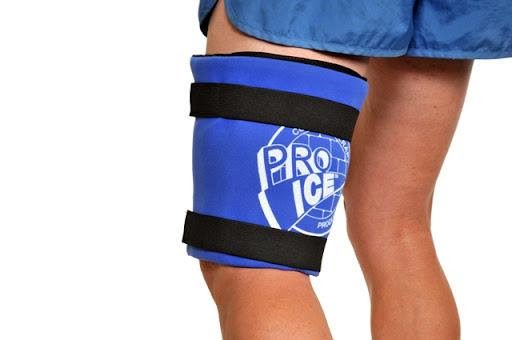
Early physical therapy treatment will help prevent further muscle damages and aid your healing process. Also, they will help you prevent such injury in the future.
The physical therapy that may be adopted include:
Manual therapy
Your therapist would assist you to ensure your muscles are gently manipulated to move. The joints are equally worked on to increase flexibility and strength. Your therapist is likely to drive the affected parts to facilitate quick healing. Doing this will ensure that essential areas are touched which cannot be adequately treated by yourself.
Motion-range exercises
While your hamstring muscles can become rather stiff as you have a strain, it’s equally imperative that you do not stretch them in the recovery phase. It is only on the instruction of your therapist that you can then consider it safe to start specific mild physical exercises.
Muscle-building exercises
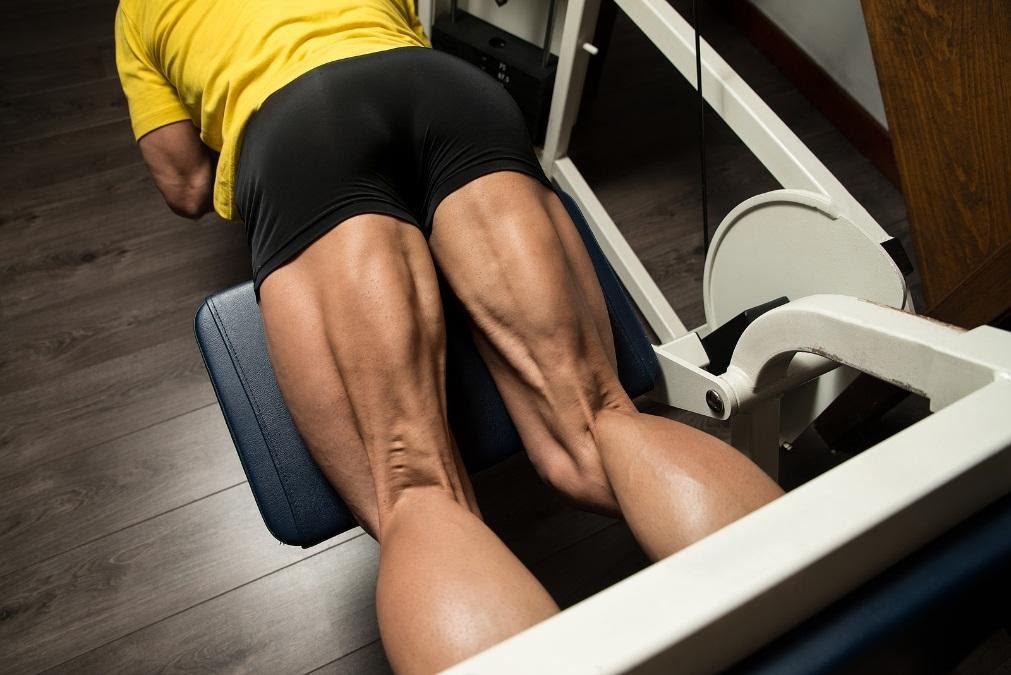
Your recovery from hamstring can be fast-tracked when you engage in a range of muscle-building and strengthening exercises. During the process, your therapist would check and compare the pack of muscles on each leg and then tell you specific activities to focus on weak areas.
Practical training:
As you begin to get back your hamstring strength, your therapist requires you to engage in a suitable training program. They would monitor your progress and ensure you do not put excess stress on the injured muscles anymore. When you gradually succeed in this program, you will then be introduced back to other tasking exercises.
Other physical therapies that can equally be adopted include:
Rest
When you take a lot of rest by desisting from walking or working out, you will enhance the healing of your hamstring.
Apply ice
It is also good to apply ice packs to the affected area of the hamstring. If you do this at least 3 to 4 times daily for every 20 or 30 minutes, you will reduce pain and inflammation.
Compress your leg
With the aid of an elastic bandage carefully worn around your leg, you would reduce swelling.
Alternative Options to Treat Hamstring Strain
Other essential treatment options for hamstring strain include:
Non-steroidal anti-inflammatory drugs (NSAIDs)
Certain medications such as Aspirin, Ibuprofen, Naproxen, and other NSAIDs might assist in the relieving of your pain and ultimately reduce inflammation of the affected areas. However, you should follow prescriptions that an appropriate health professional hitherto recommends avoiding abuse.
Extracorporeal shock-wave therapy (ESWT)
There is a theory that has general acceptability that shock waves might be effective in healing as it improves blood flow and breaks fibrotic scar tissues. The ESWT is carried out by a professional medical practitioner who applies a probe on your skin across the affected part. This probe brings shocking waves as a result of electric charges flowing through it. In the first few days of treatment, it usually comes with a lot of pain. But it is a very effective method that proves valuable as time goes on.
Surgery
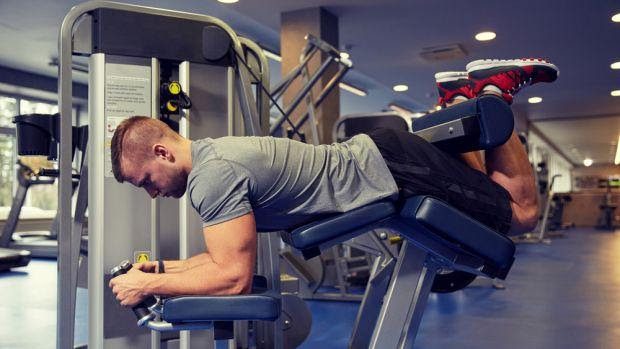
In situations of a complex hamstring strain, especially if you have tried many home remedy solutions as treatment plans for your hamstring strain, and there is still no tangible progress made. In that case, your therapist may recommend surgery for you.
Devices/Equipment to Relieve Hamstring Strain Symptoms
Listed below are a couple of devices or equipment you can put into good use when you have hamstring strains:
Pad placement
You can place pads in places that are pretty comfortable and effective in relieving pain. Usually, your therapist would advise that you put one of the pads atop the muscle while the second one is placed one-third across the path of the muscle you intend to strengthen.
Electrical Stimulation Device
If your daily routine is to sit all day, an electric stimulation device would be appropriate for you because it provides a further blood flow through your hamstring.
Vibrating Foam Roller
When operated at its peak, this device gives impressive power. For instance, its use in Level 5 speed makes its vibrational rate subdue muscle strains on people with hamstrings.
Compression Leg Wrap
This contains the central box system that sends compressed air to the legs, which provides a sequence of pressure and then massage.
Handheld Massager
It can be used to massage hamstring strains. Often handheld, its speed can be adjusted as it is very comfortable to use.
Heated Vibrating Massaging Ball
While it can conveniently provide relief and warm-up for tight hamstrings, it has a microwave-style massaging therapy that becomes cold after every 30 minutes. Its heat doesn’t burn. But it gives an incredible soothing on sores on your leg muscles.
Hamstring Strain Prevention
You can prevent the occurrence of hamstring strain on your leg. Here are few tips for doing that:
- Ensure always to warm up your body right before and after any physical activity
- Gently intensify your physical activity—10 percent increment is good per week
- Immediately end any exercise you might be engaging in as soon as you notice any pain on your thigh’s back.
- Engage in stretching and strengthening activities to prevent hamstring occurrence.
- Engage in a high rate of cardiovascular exercise and muscular endurance to avoid fatigue.
- Ensure to drink water before, during, and after play
- Avoid activities that might cause pain.
Medical Procedures for Hamstring Strains
The following are the medical procedures that usually accompany people with hamstring strains:
Diagnosis
In the course of a physical examination, your therapist would check for inflammation, swelling, or points of tenderness. This is done towards the back of your thighs. Meanwhile, the precise location and rate of pain you experience may equally assist in determining the severity of the damage that has occurred to the hamstring.
Similarly, your therapist might equally move your legs all around through different positions. This will help determine the areas of strain and which muscle is damaged.
Imaging Tests
In cases of extreme hamstring strains, the muscle can tear. It could completely get detached from the pelvis or shinbone. Usually, X-rays are used to check for avulsion fractures, while MRI and ultrasound scans are used to identify the tears in muscles and tendons.
Surgery
In situations of a complex hamstring strain, such as when your muscle has detached itself from the pelvis or shinbone—where they are connected initially—in that case, your therapist may recommend surgery for you. Orthopedic surgeons would help reattach it back to position.
To repair a tendon avulsion, the surgeon would pull the hamstring tendon back to its original place, removing any apparent scar tissue. The tendons are now reattached to the bone with the aid of small devices known as anchors.
Natural Remedies for Hamstring Strains
There are several conventional treatment methods to cure hamstring strain in dogs, as listed above; other natural remedies have equally proven to work better and are very effective. They include:
Rest
When you take a lot of rest by desisting from walking or working out, you will enhance the healing of your hamstring.
Apply ice
It is also good to apply ice packs to the affected area of the hamstring. If you do this at least 3 to 4 times daily for every 20 or 30 minutes, you will reduce pain and inflammation.
Compress your leg
With the aid of an elastic bandage carefully worn around your leg, you would reduce swelling.
Elevate your leg
Anytime you are sitting or perhaps lying down, you should always ensure to rest your leg on an elevated platform. This will ensure the proper flow of blood to the affected parts.
Use Topical Solution
An all-natural ointment like Joint Mud could help relieve pain and increase mobility especially if your pain is located closer to your knees.
Foam Rolling
This kind of self-massage targets the deepest of muscles, breaking adhesions and reducing tension. However, should you have any swelling or bruises, you are strongly advised against its usage, which might worsen the situation.
Conclusion
In this article, we have established hamstring strain occurs due to a defect in one or more muscles at the back of the thigh. We have categorized the three muscles that might have these issues: semitendinosus, semimembranosus, and biceps femoris.
Hamstring occurs majorly in athletes such as track runners, skaters, and especially soccer and basketball players. You may quickly be afflicted with it if any of your muscles stretch just beyond their limits when you engage in any physical activity such as sports. Also, other similar causes may include old age, prior knee or calf injury, osteitis pubis, tight hip flexors, or fatigue.
The general symptoms of hamstring strains range from mild, moderate, and severe muscle strains. And it can be treated either with physical such as manual and strengthening exercises, rest, application of ice, and compression, or with the use of the surgical procedure. However, MRI and X-rays are to be taken first to carefully identify the tears just before the recommendation by a professional surgeon.


